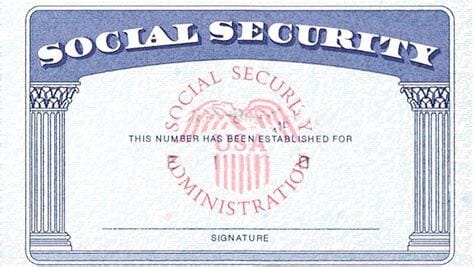- Retirement Examined
- Posts
- Retirement Examined
Retirement Examined
5-Minutes of Breakthrough Secrets: Happy, Fulfilling Retirement

The weekly email that keeps you up to date on exciting Retirement topics in an enjoyable, entertaining way for free.
by Eric Seyboldt, MBA

Recently passed by the Senate (but as of writing this hasn’t been signed into law), the “One Big Beautiful Bill” introduces the most meaningful changes to the Social Security system since the 1983 amendments. Stripped of most political flourish, the legislation reflects a methodical and pragmatic adjustment to both demographic trends and economic shifts that have placed sustained pressure on the Social Security trust funds.
Four structural changes stand out, particularly for individuals nearing retirement.
1. Full Retirement Age (FRA) Gradually Increases to 68
For individuals born in 1965 and later, the Full Retirement Age (FRA) will now increase incrementally by two months per birth year, topping out at age 68 for those born in 1972 or later. This reflects rising life expectancies and aligns benefits with expected longevity. Early eligibility remains at age 62, but the reductions for early claiming are now more pronounced. For those with sufficient health and employment stability, delaying benefits continues to be a financially advantageous strategy, with delayed retirement credits adding roughly 8% per year to monthly benefits.
2. Enhanced Minimum Benefit for Low-Income Workers
Beginning in 2026, workers with at least 30 years of covered earnings will receive a new minimum Social Security benefit equal to 125% of the federal poverty level. This enhancement is designed to combat senior poverty and recognize the contribution of lifetime workers in low-wage sectors. Those with fewer than 30 years will receive proportionately scaled benefits. This is a significant change for retirees whose earnings histories would have previously translated into minimal Social Security income, despite long-term labor force participation.
3. Introduction of a “Social Security Bridge” for Near-Retirees
Perhaps the most innovative provision is the creation of a transitional "Social Security Bridge Benefit" for Americans aged 62 to 67 who experience involuntary job loss or chronic underemployment. Funded independently from the main Social Security trust fund, this temporary benefit allows eligible individuals to receive a modest monthly income without triggering permanent reductions in their eventual retirement benefit.
Consider a real-life example: Susan, age 63, spent her career as a mid-level office manager. Last year, her company downsized, and she was laid off. Despite months of searching, she has only found part-time work at $18/hour. Under the old system, Susan may have felt forced to claim Social Security early, locking in permanently reduced benefits. Under the new bridge program, Susan can receive temporary support—approximately 60–70% of what her full retirement benefit would be—without locking in early-claiming penalties. This buys her time to seek better employment, recover financially, or simply wait until her FRA to claim her full benefit.
This feature is especially relevant in today's labor market, where age discrimination and skill mismatch can leave older workers vulnerable. For pre-retirees, the bridge benefit offers a financial buffer in a period of potential volatility and allows for more strategic timing of asset withdrawals and Social Security claims.
4. Elimination of Federal Income Tax on Social Security Benefits
One of the most impactful changes in the One Big Beautiful bill is the complete removal of federal income taxation on Social Security benefits, beginning in 2026. This reverses a policy that dates back to 1984, when up to 50% of benefits became taxable for certain higher-income retirees. That threshold was later expanded in 1993 to allow taxation on up to 85% of benefits. Notably, the income thresholds were never indexed for inflation, which meant that over time, a growing share of middle-income retirees found themselves paying taxes on what was originally intended to be tax-advantaged income.
Under the new law, all Social Security benefits will be exempt from federal income tax, regardless of the recipient’s income level. The rationale behind the change is twofold: first, to restore the original promise of Social Security as a tax-free income stream in retirement, and second, to simplify tax planning for older Americans who often face complex marginal tax rate dynamics due to benefit phase-ins.
Take the example of Jim and Patricia, a retired couple with a combined Social Security income of $42,000 and additional retirement distributions of $25,000. Under the current tax regime, they would likely see 85% of their Social Security income subject to taxation, pushing a significant portion of their combined income into a higher marginal tax bracket than it appears on paper. This can affect not only their federal tax bill but also their Medicare Part B premiums, which are income-tested.
Starting in 2026, that $42,000 in Social Security income will no longer be included in their taxable income. This may drop them into a lower marginal bracket and eliminate unnecessary crossover effects on other retirement costs. For many retirees, the annual savings will range from $1,500 to $5,000, depending on income and filing status. I’ve been lobbying for this change for years. You’re welcome!:)
These changes have practical implications. Retirees with modest earnings histories will see more security. Those facing employment disruptions now have a bridge that prevents premature drawdown of both Social Security and retirement portfolios. High earners, meanwhile, will face a gradual increase in the payroll tax cap, which should be accounted for in long-term planning.
Ultimately, these adjustments are actuarially sound, fiscally restrained, and socially targeted. They preserve Social Security’s central mission while offering more flexibility for modern retirement trajectories. For investors and advisors alike, these reforms should be integrated thoughtfully into income strategies, tax planning, and longevity risk management.
Reach out to us for a complimentary, 10-minute consultation call. Let's explore strategies to protect your wealth and make your retirement everything you've dreamed of—secure, fulfilling, and worry-free. Schedule a free 10-minute consultation today by calling 614-943-2265. Your future deserves the best plan, and we're here to help make it happen.
You’ve never experienced business news like this.
Morning Brew delivers business news the way busy professionals want it — quick, clear, and written like a human.
No jargon. No endless paragraphs. Just the day’s most important stories, with a dash of personality that makes them surprisingly fun to read.
No matter your industry, Morning Brew’s daily email keeps you up to speed on the news shaping your career and life—in a way you’ll actually enjoy.
Best part? It’s 100% free. Sign up in 15 seconds, and if you end up missing the long, drawn-out articles of traditional business media, you can always go back.

How Much Cash Should You Really Keep at Home and in Your Portfolio?
by Eric Seyboldt, MBA
Client: Eric, in light of persistent inflation, market volatility, and geopolitical risk, how should I think about cash, both at home on-hand and in my portfolio?
Eric: Cash is a defensive asset, not a growth asset. Its value lies in flexibility and insulation, not return. But the decision isn’t binary. There are two distinct categories we’re talking about here: physical cash on hand and financial cash equivalents within your portfolio structure. Let’s start with the former.
Client: Great. How much physical cash should someone actually keep at home?
Eric: For most retirees or near-retirees, $500 to $2,000 in physical currency is more than sufficient. This is not ‘investment capital’—it’s emergency access capital. Its purpose is to provide liquidity during a short-term infrastructure disruption: ATM outages, local grid failures, or banking system downtime.
Any amount above that is dead weight. You're sacrificing purchasing power with no compensating yield or liquidity premium. If inflation averages 3%, that $2,000 loses nearly a third of its real value over a decade. And unlike other assets, physical cash has no path to recovery. There’s also security risk: home safes fail, homes get broken into, fires happen….
So yes, a small amount is prudent—but any more than that becomes a behavioral hedge, not a financial one.
Client: And for the rest of the “cash” component—how do you think about that within the portfolio itself?
Eric: This is more strategic. Most retirees are fundamentally decumulators now, not accumulators. That means sequencing risk is your main threat. If you’re forced to sell risk assets during a downturn to meet withdrawals, you crystallize losses and permanently impair long-term capital.
To avoid that, I generally advise clients to maintain 12 to 24 months of baseline spending in liquid reserves. That reserve should be tiered:
Tier 1 (0–6 months of expenses): Held in FDIC-insured high-yield savings or institutional-grade money market funds.
Tier 2 (6–18 months): Laddered short-term Treasuries, CDs, or low-duration municipal bonds (if tax-advantaged).
Tier 3 (beyond 24 months): Reentering the risk spectrum—diversified equities, intermediate bonds, alternatives—tailored to your drawdown horizon.
If your fixed expenses are $60,000 per year, I’d recommend $30,000–$40,000 across Tier 1 and Tier 2 assets. The goal is to ensure you don’t need to touch equity or longer-duration bond positions during periods of volatility.
Client: But rates won’t stay high forever. Isn’t holding this much cash a drag?
Eric: Only if you view cash through a pure return lens. At present, the opportunity cost is modest. Institutional money market funds are yielding close to 5%, and short-duration Treasuries aren’t far behind. More importantly, that yield is delivered with nearly zero duration and credit risk.
So this isn't the zero-yield “cash trap” we saw in the 2010s. But even if rates fall, the real purpose of this allocation remains: liquidity, optionality, and psychological discipline.
Final takeaway - Hold $500–$2,000 in physical cash at home for contingencies. Maintain 12–24 months of baseline expenses in short-duration, liquid instruments within the portfolio. Think of this as a buffer, not a bet.
The rest of your capital should be allocated based on long-term liabilities, inflation hedging, and legacy goals, not fear. Cash has no compounding effect, but you sleep better at night, and it gives you the breathing room needed to let other assets do their job.
Contact us for a free, brief 10-minute consultation. Let's explore strategies to protect your wealth and make your retirement everything you've dreamed of—secure, fulfilling, and worry-free. Schedule a free 10-minute consultation today by calling 614-943-2265. Your future deserves the best plan, and we're here to help make it happen.
🧼 Ohio’s Most Trusted Name in Power Washing
Is your home’s curb appeal fading fast? You’re not alone—and there’s never been a better time to bring it back to life.
Right now, Luke’s Property Services is offering 10% OFF all power washing services—but only for a limited time (end of May)! Whether it’s your driveway, patio, deck, walkway, or siding, they’ll blast away years of grime in a single visit.
🏠 Before and after? Like night and day.
💧 Equipment? Commercial-grade and eco-friendly.
💪 Results? Shockingly clean—and they speak for themselves.
✅ Trusted by homeowners across Central Ohio
✅ Fast, professional, and always reliable
✅ No-pressure, free quotes — just text or call!
📞 Call or Text Luke’s Property Services Today: (614) 531-6979

Fixed annuities can be an essential component of a well-rounded retirement strategy, offering security, predictability, and efficiency in financial planning.
These are current fixed annuity rates and their durations from Top A-rated carriers (subject to change at any time, not FDIC insured):
Rates Are Maxing Out! Don’t Wait To Lock These Fixed Annuity Rates In Today! 6.70% is possible now!
3-year: 5.55% (under $100k Deposited)
3-year: 5.80% (over $100k Deposited)
5-year: 6.20% (under $100k Deposited)
5-year: 6.45% (over $100k Deposited)
7-year: 6.45% (under $100k Deposited)
7-year: 6.70% (over $100k Deposited)
Please feel free to call Eric at 614-943-2265 if you’d like to ask any questions or request information on these fixed annuities or other retirement topics that are on your mind.

“In preparing for battle I have always found that plans are useless, but planning is indispensable.”
Dwight D. Eisenhower

Dwight D. Eisenhower
REAL ASSETS, Invest Like the Ultra-Wealthy

Invest Like the Ultra-Wealthy: Why Smart Money Is Flocking to Real Assets Like Gold—and Even Bourbon
Let’s be blunt: the old playbook for protecting retirement is broken. Inflation is creeping higher. The dollar is losing its punch. Central banks are printing money like it’s Monopoly night. And markets? As unstable as ever.
That’s why the savviest investors aren’t just watching the storm—they’re preparing for it.
They’re moving into real assets—tangible, inflation-resistant investments that don’t vanish when the market sneezes. We’re talking about gold. We’re talking about bourbon barrels. Yes, bourbon. The same elite-class asset quietly making millionaires in private circles.
These aren’t just collector’s items. They’re financial armor—hard assets that hold their ground when stocks crater and paper wealth evaporates.
And it’s not just a hedge—it’s a strategy.
📌 Gold has withstood centuries of financial upheaval.
📌 Bourbon barrels are aging assets with built-in appreciation and rising global demand.
📌 Physical assets provide something no stock ever can: ownership you can see, touch, and trade on your terms.
During market chaos, real assets don’t flinch. They thrive. History proves it. While equities tumble, hard assets often surge—shielding portfolios and delivering asymmetric returns when they're needed most.
And even in calm times? They add powerful diversification. That’s why the ultra-wealthy use them as a cornerstone—not a sideshow—in their wealth strategy.
Ask yourself:
🧠 Are you truly diversified?
🧠 What happens to your retirement if inflation stays elevated?
🧠 If the dollar weakens, what asset in your portfolio gets stronger?
If you don’t have a good answer, it’s time for a new conversation.
Allocating funds into the asset class known as “Real Assets” may be a strategy that you should consider.
Ask us how to Rollover a portion of Your IRA or 401k To A BOURBON IRA (www.bourbon.fund/how-it-works/) or a GOLD IRA (see link below) and:
Safeguard your assets from the collapsing dollar
Incorporate the ‘REAL ASSET’ class into your portfolio like the ultra-wealthy
Hedge against the current high-inflation conditions
Protect your retirement assets against economic crises
Just get in touch. We make it easier than ever.
CONNECT WITH US

Eric Seyboldt, MBA
Feedback or Questions?
You’re invited to get in touch with us if you’d like to find out how the Novus Financial Group can help you on your journey to a happy, fulfilling life in Retirement.
Office: 614-943-2265
Feel Free To Forward Retirement Examined To A Friend and Have Them Subscribe By Clicking The Button Below:
Reach out if you’d like to advertise your business on Retirement Examined or would like to be a sponsor.
Investment advisory services are offered by duly registered individuals on behalf of CreativeOne Wealth, LLC a Registered Investment Adviser.
The content we provide here isn’t financial advice and cannot be taken as such. Please speak to your financial advisor before making any investment decision. Also, note that every investment comes with its risks and drawbacks. Lastly, we would like to remind you that past results cannot guarantee future returns.
This website contains one affiliate link. When you click on the link and make a purchase, we may receive a commission at no additional cost to you. We only promote companies that we have personally used or researched and believe will add value to our readers



